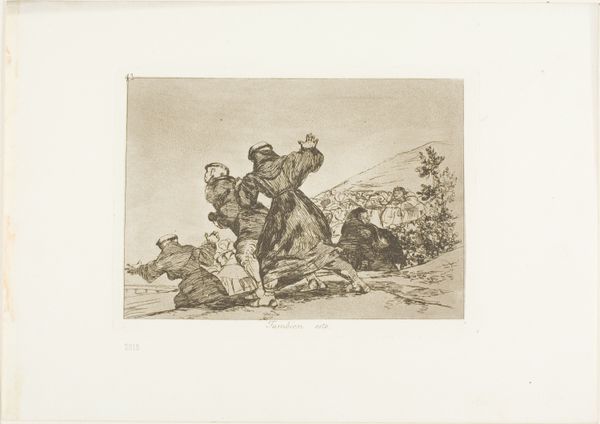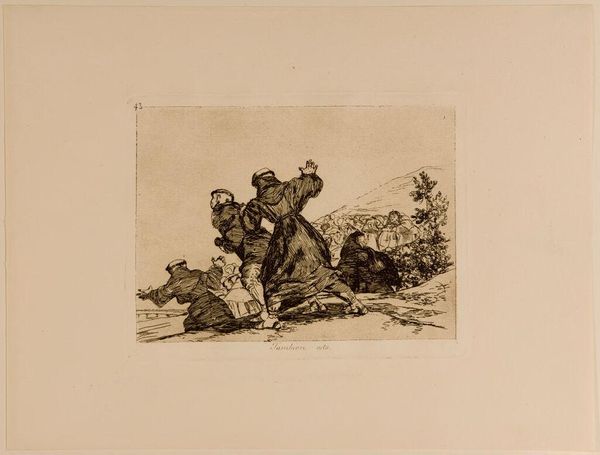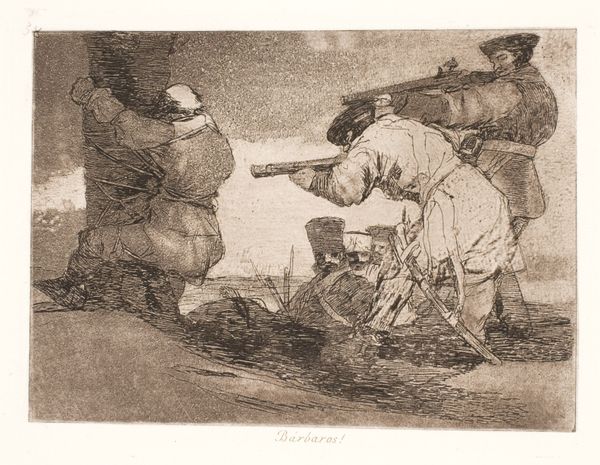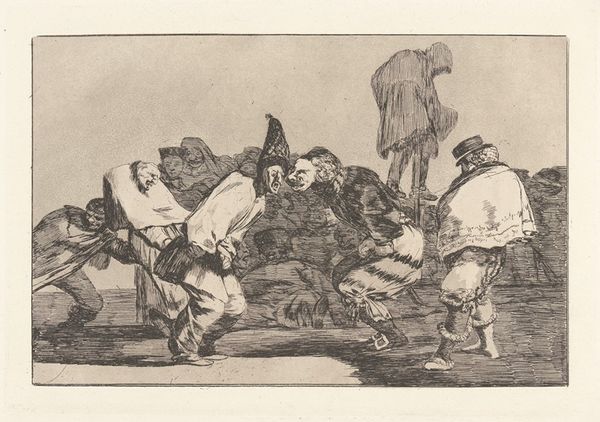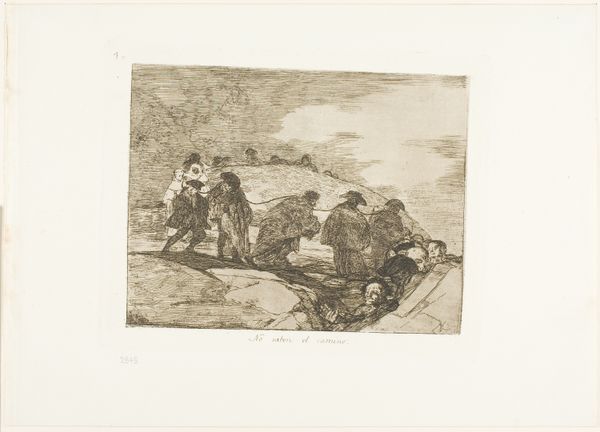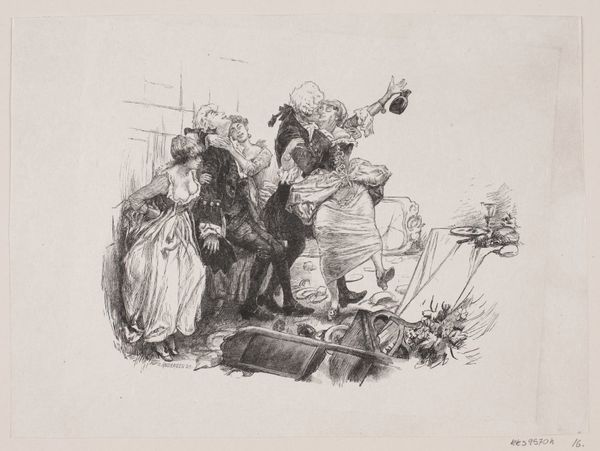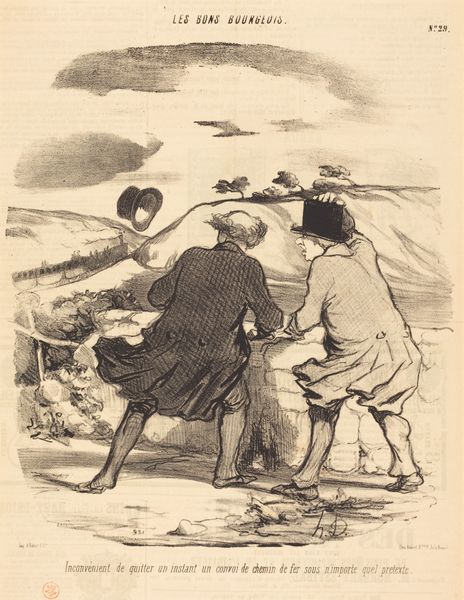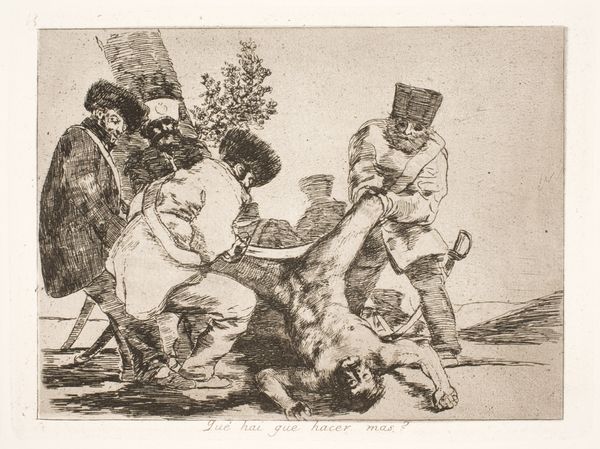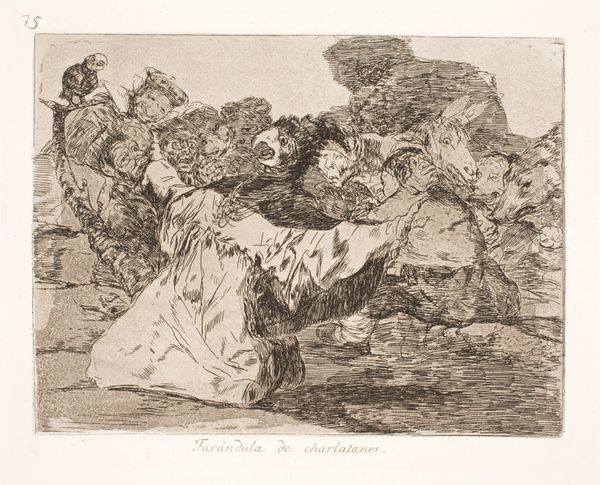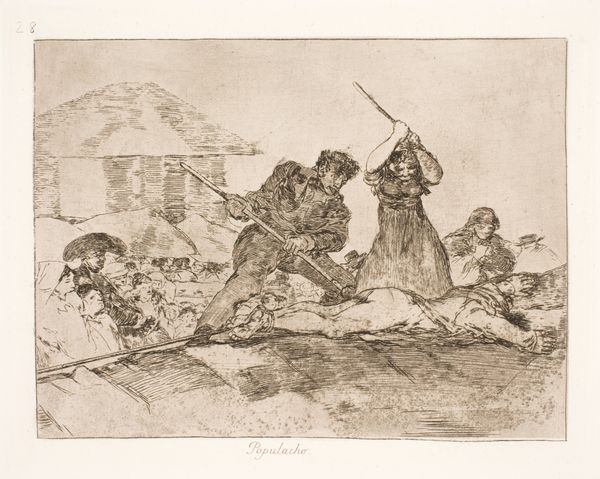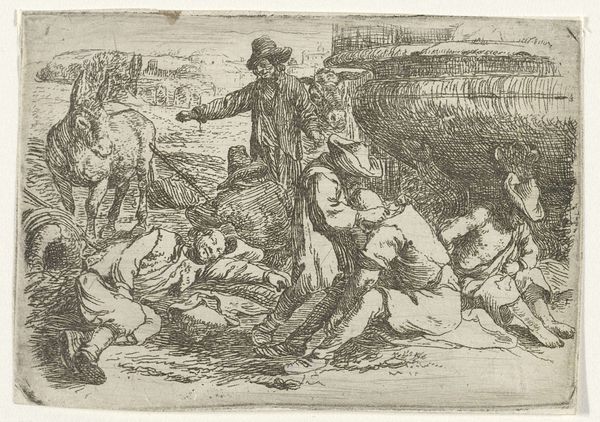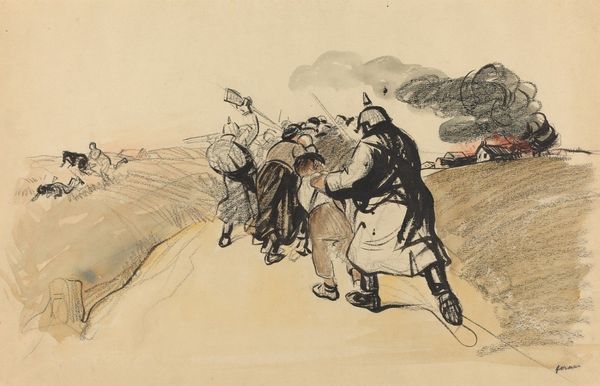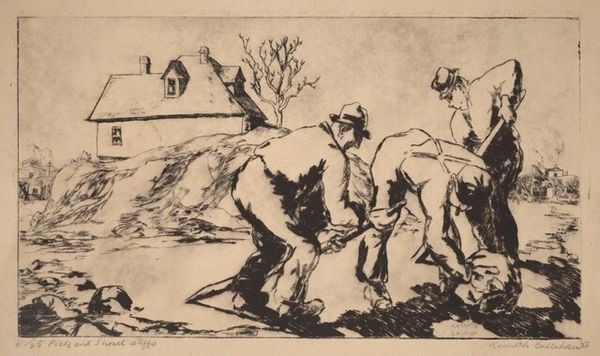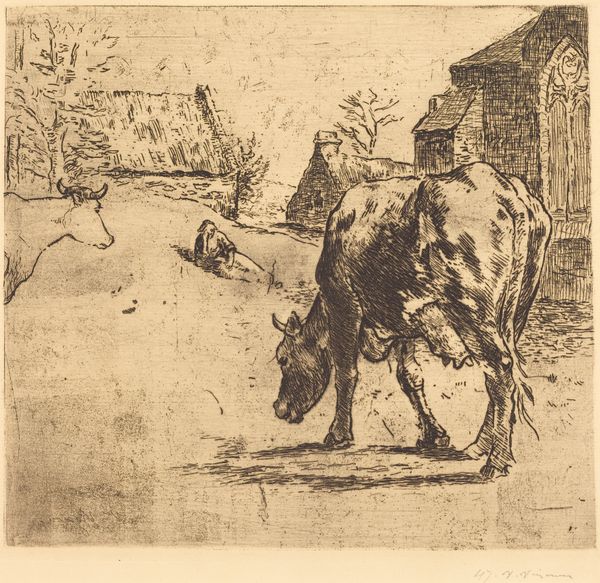
print, etching, engraving
# print
#
etching
#
romanticism
#
history-painting
#
engraving
Dimensions: 152 mm (height) x 200 mm (width) (plademaal), 132 mm (height) x 194 mm (width) (billedmaal)
Curator: Immediately, the frantic energy of this print grabs you, doesn't it? Editor: It does. The figures in motion create a strong sense of disquiet, and it has almost dreamlike quality about it. The stark contrast contributes to this feeling as well. Curator: What you're observing is part of the beauty of this etching and aquatint created sometime between 1810 and 1820 by Francisco Goya. The print is titled "Også dette," which translates from the Danish as "Also this." It belongs to his series "The Disasters of War" currently housed in the collection of the SMK, the National Gallery of Denmark. Editor: War truly is disastrous, and it’s captured masterfully in this series of prints. How do the scenes of turmoil affect the broader context of its imagery and the purpose that Goya intended it to embody? Curator: Goya's work exists amidst profound socio-political turmoil and seeks to communicate something deeper. These prints offer stark social commentary on the political and social events from 1808-1814 during the Spanish War of Independence. Goya witnessed these conflicts between Napoleon’s French army and Spanish forces, and these disastrous events directly inform this piece. Editor: Yes, it’s fascinating to examine how he infuses religious symbolism and traditional archetypes with the horror of modern warfare, in doing so he invites reflection on moral decay within war. How did its reception affect future conflict-driven art? Curator: It had a powerful impact, indeed. Its brutal depiction of war without romanticism was radical at the time. Goya wasn't just documenting events; he was actively challenging the glorification of war in art. "The Disasters of War" has since served as a touchstone for artists grappling with war's ethical and psychological dimensions. Editor: Goya's work has a resonance that goes beyond simple depictions of conflict. Its images encourage reflection on society, power, and the long-lasting effects of suffering on people. The power is unforgettable, leaving observers deeply moved. Curator: A somber and vital chapter in the history of art, and indeed, humanity.
Comments
No comments
Be the first to comment and join the conversation on the ultimate creative platform.
